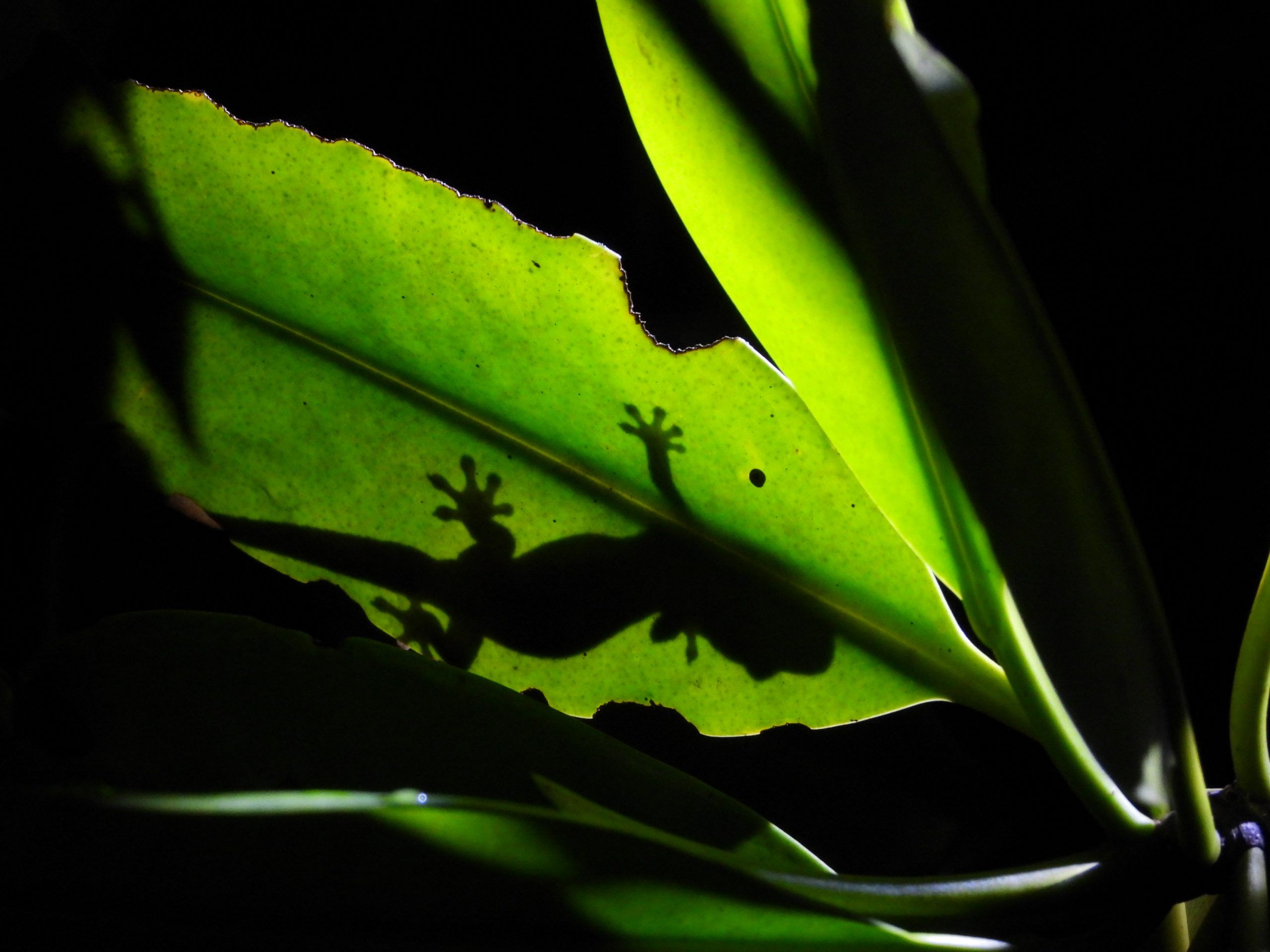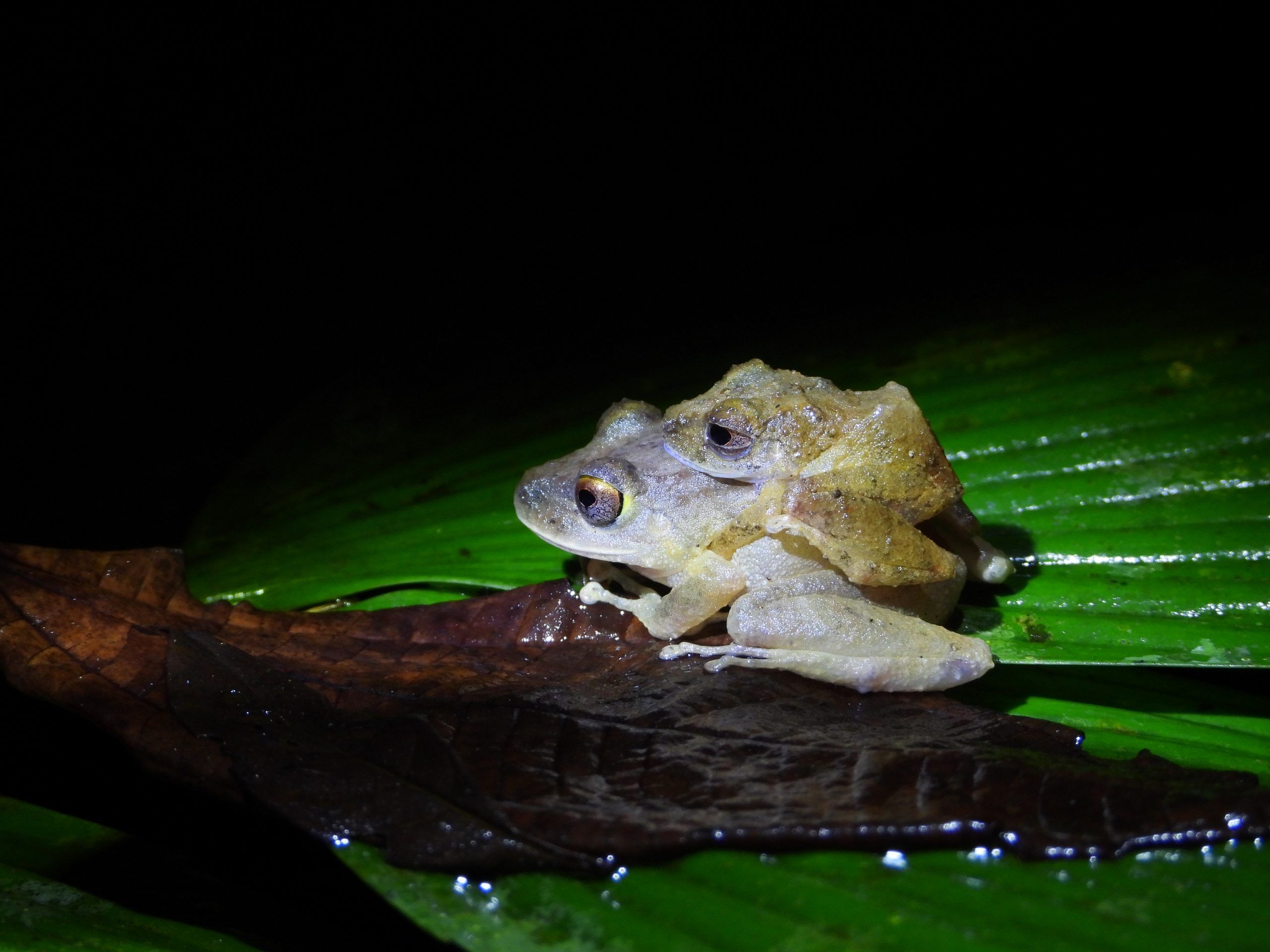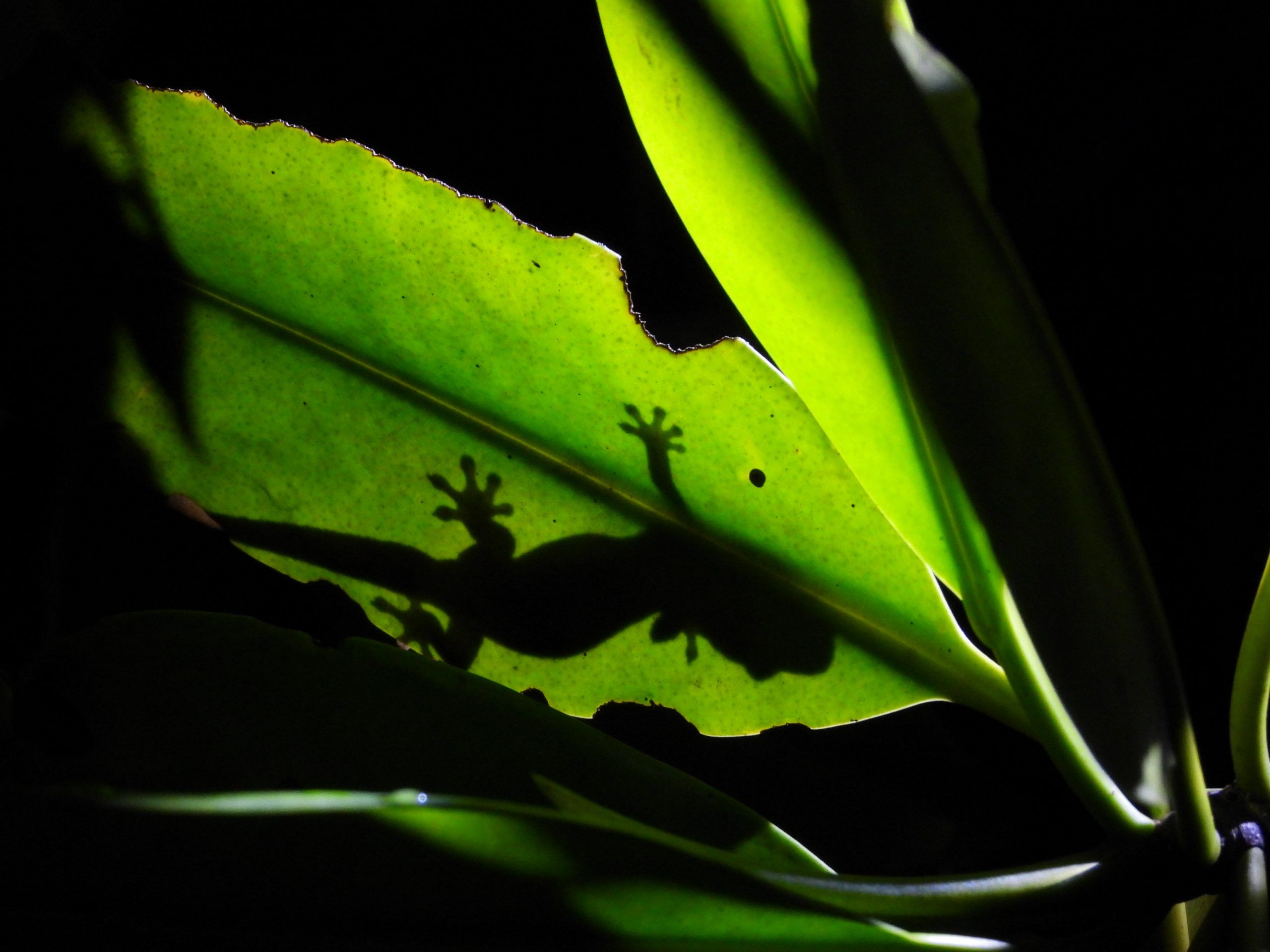Published February-28-2022
Join Us For An Interesting Night Hike In Bocas
The forest becomes very noisy at twilight; it’s time for the cicadas to gather, signifying that nightfall is almost here. As we dine, reveling in the culinary delights of Panama, we realize that we are not the only species present. …

Hugo Santa Cruz

The forest becomes very noisy at twilight; it’s time for the cicadas to gather, signifying that nightfall is almost here.

As we dine, reveling in the culinary delights of Panama, we realize that we are not the only species present. A rodent with huge eyes and a captivating gaze catches our attention on the main building’s balcony. A small Wooly Opossum enjoys bananas placed on the bird feeders. How lucky we were! Having the animal close enough to photograph is a real privilege. It is one of several regular visitors to the feeders at night. Other species may appear at any time, such as the Great Four-eyed Opossum, fruit bats, and even night monkeys.
Anxious to start our nocturnal adventure, we finish with dinner. As soon as we turn on the flashlights, we notice movements in the Hagua tree in front of the dining room. A family of Crab-eating Raccoons is eating the fruits of the Genipa. We hadn’t even started the tour, and we had already seen two species of mammals!
Birders Show Night Hike
We stroll towards the mangrove. Once inside the wetlands, we observe various crabs, spiders, and grasshoppers among the leaves of the red mangrove. This red mangrove extends to the seashore. We can also see needlefish, gobies, and a yellow stingray in the ocean, resting at the bottom near a coral reef. On the way back from the main dock, we hear strange noises – almost as if they were explosions. These are made by Pistol Shrimps. This species lives underwater and in mud, yet we can listen to their “explosions,” which they make by expelling bubbles from their pincers at high speed. These explosions manage to stun their prey so that the shrimp may capture them.
We continue with the search for nocturnal animals. Without going too far, we find a snake resting on the leaf of a palm tree, waiting for its prey. It is a Brown Vine Snake, harmless to us, so we can approach it quietly to observe it better and take some pictures. Its extended length is surprising in relation to its slender body.

During the walk, we hear different sounds, some of them belonging to frogs and others to insects. We follow one sound. After several minutes of searching, we locate a tiny Caribbean Dink Frog. This frog is about the size of the guide’s thumbnail. Who would have thought a tiny creature could emit such a loud sound? We see several amphibians and reptiles along the way: a Green Climbing Toad, a Talamanca Rocket Frog, and a Savage’s Bull Frog, as well as a Striped Basilisk, a Smooth Helmeted Iguana, and some anoles.

We hear soft movements above our heads during the thorough search for amphibians and reptiles; these aerial sounds cannot indicate anything else… a two-toed sloth! Wow, we didn’t expect that; so our attention immediately went to the forest canopy to see this beautiful nocturnal animal on the move.
On the way back to our cabins, we hear the Mottled Owl; but we can’t see it. That’s okay. Now we have an excellent excuse to do another night hike tomorrow. Maybe we can find the nocturnal monkeys?